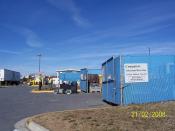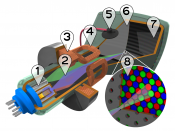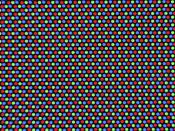Television, our link to the changing world around us. Once thought to be just a passing phase through a quickly advancing society, but now a common innovation in every household. Since the l940s television has become the window on the world for much of industrialized society. Anything the eye can see may be brought to the little screens in living rooms, bedrooms, and kitchens. If television has persisted in offering mindless entertainment, it has also frequently rewarded viewers with outstanding presentations in drama, documentary, and the arts, and it has made such programming available to millions of people across the globe.
The television is quite a new piece of technology, but its preparations started much earlier. It was 1873 when the Scottish scientist James Clerk Maxwell predicted the existence of the electromagnetic waves that would make it possible to transmit ordinary television broadcasts. In the same year, the English scientist Willoughby Smith and his assistant Joseph May noticed that the electrical conductivity of the element selenium changes when light falls on it.
This property was later given a name, known today as photoconductivity and is used in the vidicon television camera tube. In 1888 another observation was made, by the German physicist Wilhelm Hallwachs, who noticed that certain substances emitted electrons when exposed to light. This effect was given the name photoemission.
Between that date and birth date of the television, several methods of changing light into electric current were discovered, but it was some time before the methods were applied to the construction of a television system. Scientists encountered a problem while constructing the television and it was the lack of knowledge they had when it came to amplifying the weak currents that were produced. Then, in 1906, the American engineer Lee De Forest patented the triode...


